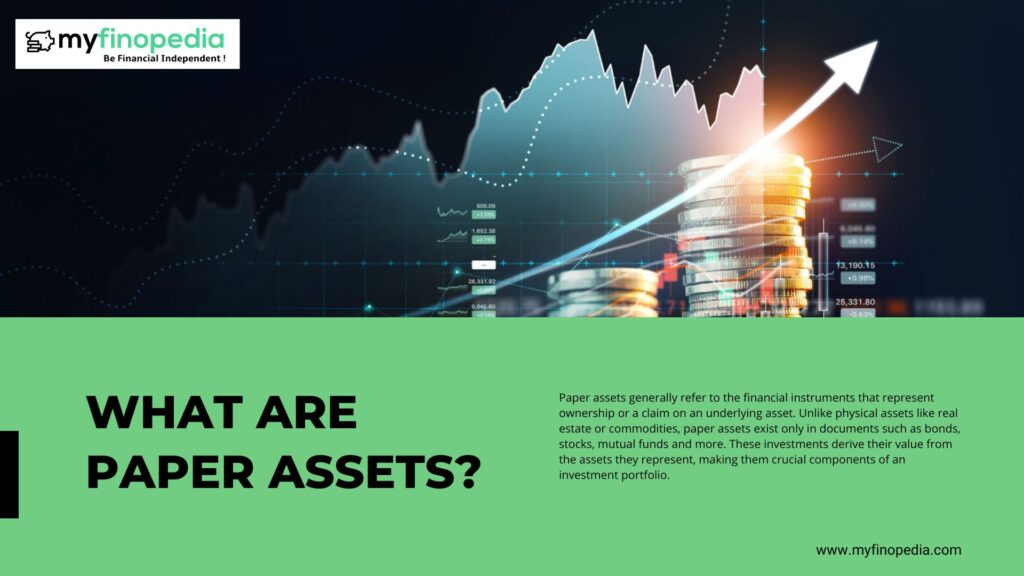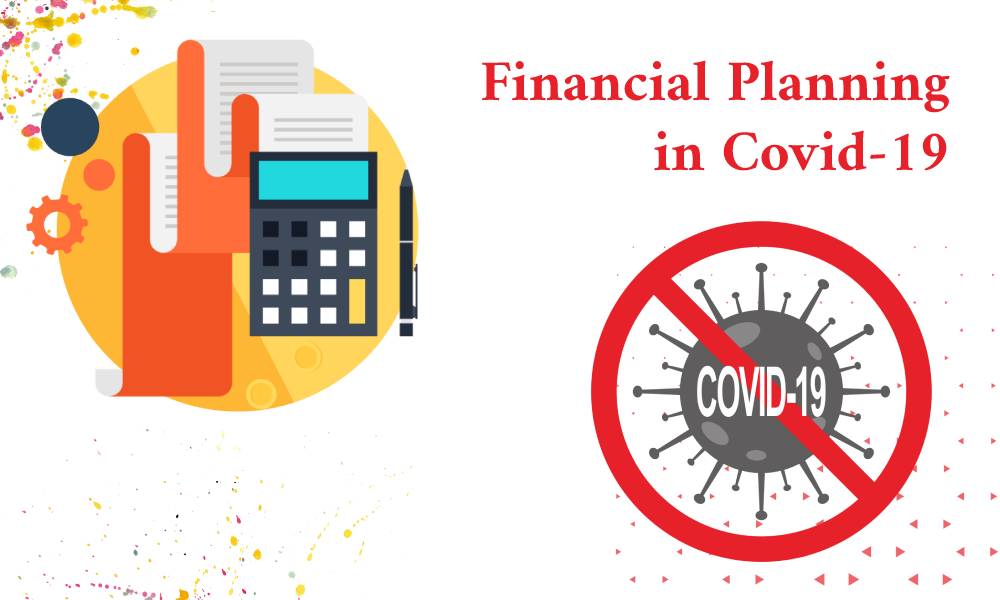When it comes to building wealth and securing a stable financial future, investing wisely is fundamental. While many people are familiar with traditional investment avenues such as gold, real estate, there is another category worth considering – paper assets. In this post, we will dive into the world of paper assets discussing the types and important considerations to keep in mind before investing. So let’s get started.
What are Paper Assets?
Paper assets generally refer to the financial instruments that represent ownership or a claim on an underlying asset. Unlike physical assets like real estate or commodities, paper assets exist only in documents such as bonds, stocks, mutual funds and more. These investments derive their value from the assets they represent, making them crucial components of an investment portfolio. So, a paper asset is a legal document that acts as an evidence of ownership or a right to ownership of a piece property and generally signed by both the buyer and the seller on a deed of trust. Cryptocurrency, such as Bitcoin, can also be a paper asset in a digital form that is recorded on a distributed ledger, such as a blockchain and is transferable between parties.
Types of Paper Assets:-
- Stocks: Stocks can represent ownership of a company. Also, It is known as equities. Investors can purchase shares of publicly credit companies along to participate in the company’s growth and success offer the potential of capital appreciation and dividend income but they also come with inherent risks.
- Bonds: Bonds are debt instruments you should buy from governments, municipalities or cooperation’s. By the time you invest in bonds, you are necessarily lending money to the issuer in return of regular interest paid and the exchange of the principal amount of maturity.
- Mutual Funds: Popularly, mutual funds are known to pool money from multiple investors to invest and diversify portfolio of securities such as stocks, bonds, or even both. These are managed by professional fund managers who make investment decisions on behalf of the investor. Mutual funds offer diversification and professional management, which makes them suitable for investors with varying risk appetites.
- Exchange-Traded Funds (ETFs): ETFs are similar to Mutual Funds, but traded on stock exchanges like individual stocks. Their aim is to replicate the performance of a specific index or sector. ETFs or Exchange-traded funds provide diversification, flexibility, and transparency making them popular investment vehicles.
Factors to Consider Before Investing in Paper Assets:-
- Risk Tolerance: Assess your risk tolerance before investing in paper assets. Stocks and ETFs can be volatile while bonds of stability but lower returns. Understanding your risk appetite will help you determine the right allocation for your portfolio.
- Investment Goals: Define your investment goals whether they are short term long term this will influence the type of paper assets you choose an investment strategy you adopt. Choosing the right plan with the help of advisors will make your financial future better.
- Research and Due Diligence: Thoroughly researching the industrial assets that you are considering is the ultimate dependent factor on your asset management. Understand the fundamentals of the companies and entities issuing the assets, analyze historical performance and assess their growth prospects. This will help you make more informed decisions in the investment world.
- Diversification: You can aim to diversify your portfolio to minimize risk in the volatile market. Different assets, sectors, classes, and regions are the best way to gain profits by diversification across different assets. You can cut down your risks, by putting emphasis on diversifying your portfolio to gain ultimate profits, when other assets do not perform well.
- Monitoring and Rebalancing: By regularly monitoring your investments, you can avoid many risks. Review your portfolio’s performance, and make it updated accordingly, to outperform other contemporaries in this strategy. Rebalancing your portfolio periodically can ensure that, without adverse effects, it aligns with your investment objectives and risk tolerance.
Advantages of Investing in Paper Assets:
The advantage of investment paper assets are:-
- Potentials for capital appreciation is one of the main factors why people should approach paper assets. Paper as it such as stocks bonds and ETFs have the potential to increase value overtime allowing investors to benefit from capital appreciation.
- Many paper assets, particularly stocks, have the opportunity to earn regular dividend income. The dividend payments are usually made by companies to shareholders, as a share of their profits.
- Paper assets are generally more liquid compared to physical assets. It is easier to buy bonds than mutual funds, making it convenient for investors to access the funds when needed.
- Paper assets provide investors with flexibility and accessibility. Investors can choose from a wide range of assets, investment vehicles and investment strategies based on the risk tolerance time horizon and financial goals.
- Mutual funds and some ETFs are managed by professional fund managers who make investment decisions on behalf of the investors. This allows individuals with limited investment knowledge at times to get benefits from the expert management system.
- Paper Assets offer transparency in terms of pricing performance and information. Investors can access real time market data, financial reports and other relevant information to make informed decisions.
- Compared to certain physical assets, paper assets often have a lower barrier to entry. Investors can start with smaller amounts of capital and gradually increase the investment as they build wealth over time.
- Depending on the jurisdiction and specification of investments, paper assets may offer tax advantages such as tax-deferred growth, tax deductions on certain investment expenses or tax-efficient dividend distributions.
- Paper assets can be valuable components for a estate planning to stop; they can be easily transferred to heirs and beneficiaries providing a means to pass on wealth and potentially reduce estate taxes.
Conclusion
Investing in paper assets can be a rewarding endeavor, provided you understand the nuances and take the necessary precautions. By comprehending the types of paper assets available, conducting horror research, diversifying your portfolio, and staying vigilant with monitoring you can increase your chances of achieving your coveted financial success.






